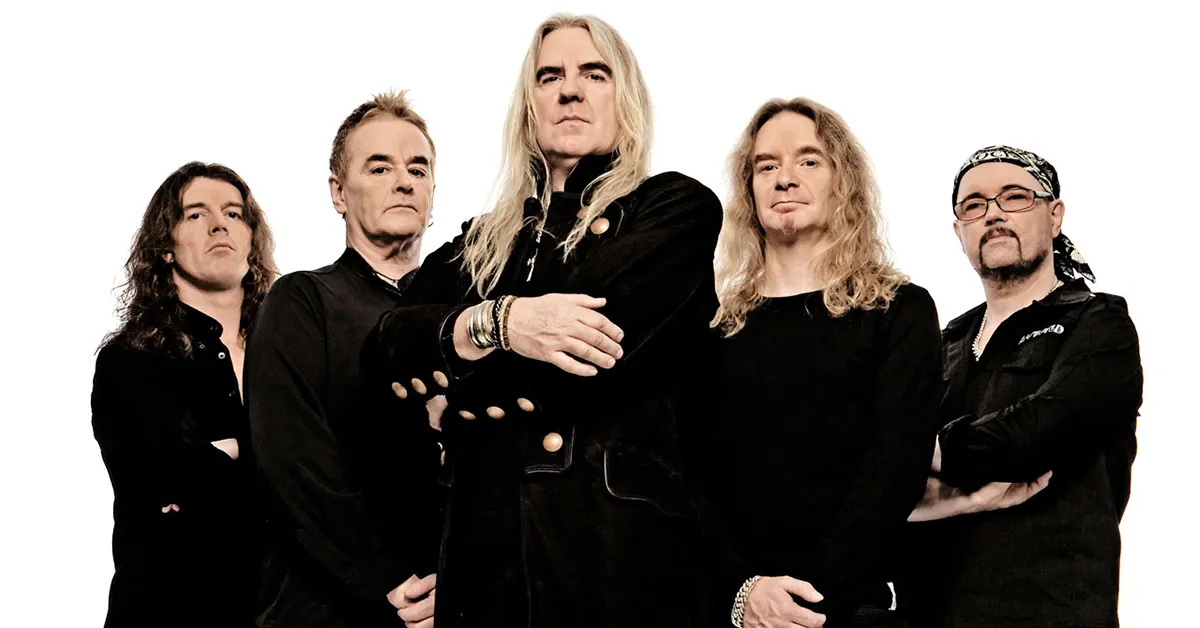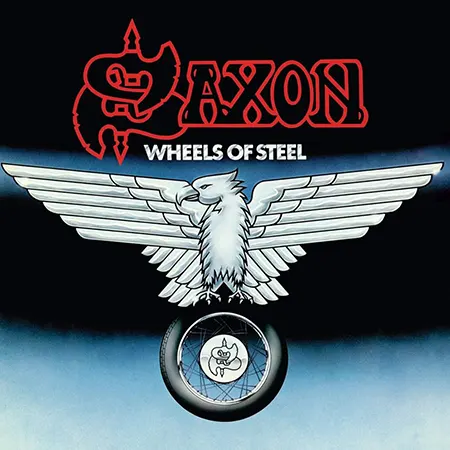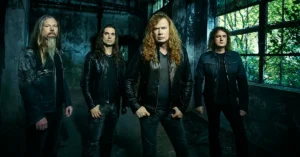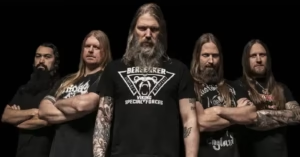Saxon: The Titans of Heavy Metal
Saxon. Formation and Early Years (1970s)
The Birth of Saxon
Saxon was formed in 1976 in Barnsley, England, by guitarist Paul Quinn and bassist Steve Dawson. The band initially went by the name Son of a Bitch, but after a few lineup changes and a shift in musical direction, they changed their name to Saxon in 1978, a move that would mark the beginning of their legendary career in heavy metal.

The band’s early sound was rooted in the hard rock and heavy metal movements of the 1970s, but they would soon become one of the pioneers of the New Wave of British Heavy Metal (NWOBHM). The NWOBHM movement was a reaction to the stagnation in mainstream rock and metal, bringing in a faster, more aggressive sound, and Saxon played a crucial role in its rise.
Saxon. Breakthrough and Success: 1980s
“Saxon” (1979)
Saxon’s self-titled debut album was released in 1979 and gave the world a glimpse of the band’s raw power and musical potential. While the album wasn’t a massive commercial hit, it laid the groundwork for the band’s future sound with songs like “Frozen Rainbow” and “Still Fit to Boogie,” which showcased their blend of traditional heavy metal and hard rock influences.
“Wheels of Steel” (1980)
In 1980, Saxon released Wheels of Steel, which would become one of the band’s most iconic albums. Featuring tracks like “Motorcycle Man,” “Wheels of Steel,” and “747 (Strangers in the Night),” this album was a critical and commercial success, propelling Saxon to the forefront of the heavy metal scene.
Wheels of Steel captured the essence of the NWOBHM movement: fast, high-energy songs with powerful, straightforward riffs. It was a classic statement of the times and solidified Saxon’s place in the annals of metal history.
“Strong Arm of the Law” (1980)
Saxon’s follow-up album, Strong Arm of the Law (1980), continued their ascent to metal stardom. With tracks like “Dallas 1 PM,” “Strong Arm of the Law,” and “The Eagle Has Landed,” the album was a reflection of the band’s commitment to heavy, riff-driven metal. It continued the momentum from Wheels of Steel and received strong reviews for its energetic and anthemic sound.
Saxon. Peak Years: Mid to Late 1980s
“Denim and Leather” (1981)
In 1981, Saxon released Denim and Leather, one of the band’s most celebrated albums. The album’s title track has become an anthem for heavy metal fans worldwide, representing the lifestyle of the era. Other notable tracks like “Princess of the Night” and “And the Bands Played On” continued Saxon’s tradition of writing songs that celebrated the joy and rebellion of metal music.
Denim and Leather marked the peak of Saxon’s popularity in the early 1980s and was a key album in the NWOBHM movement. It was also a pivotal moment for the band as they solidified their signature style.
“Power & the Glory” (1983)
In 1983, Power & the Glory showcased Saxon’s evolving sound, blending their traditional heavy metal roots with a more polished and refined production. The album included tracks like “This Town Rocks” and the title track, and while it was less raw than its predecessors, it still packed a punch with its heavy riffs and classic heavy metal anthems.
Saxon. Decline and Revival: 1990s and 2000s
1990s Decline
As the 1990s arrived, the popularity of NWOBHM began to wane, and many of its prominent bands, including Saxon, faced difficulties in adapting to the changing musical landscape. The band went through lineup changes and faced struggles with commercial success, as the grunge movement and alternative rock took the spotlight.
Despite the challenges, Saxon remained active, and albums like Solid Ball of Rock (1990) and Forever Free (1992) showcased the band’s dedication to their craft. These albums didn’t achieve the same commercial success as their earlier works but retained Saxon’s trademark style and spirit.
“Killing Ground” (2001)
In 2001, Saxon released Killing Ground, an album that marked their return to form. The album was met with critical acclaim, as it showed that Saxon had not lost their edge. The songs were heavier and faster, with a return to the more aggressive sound of their earlier years. Tracks like “Coming Home” and “Killing Ground” were well-received by both long-time fans and a new generation of metalheads.
Modern Era: 2010s to Present
“Call to Arms” (2011)
Saxon entered the 2010s with Call to Arms (2011), an album that was celebrated for its classic heavy metal sound while incorporating modern elements. With songs like “Hammer of the Gods” and “Call to Arms,” the band proved that they still had plenty of energy and creativity left in their metal arsenal. Call to Arms was a critical success and reignited interest in the band.
“Thunderbolt” (2018)
In 2018, Saxon released Thunderbolt, an album that received rave reviews for its high-energy riffs and classic metal sound. The title track and “Nosferatu (The Vampire’s Waltz)” became fan favorites, and the album further solidified Saxon’s reputation as one of the most enduring and influential heavy metal bands of all time.
Legacy and Influence
Saxon is regarded as one of the pioneering bands of the New Wave of British Heavy Metal and continues to be a major influence on the metal scene today. Their music has inspired countless bands, and their influence is still felt in the work of newer generations of metal musicians.
The band’s anthems, including songs like “Princess of the Night,” “Motorcycle Man,” “Denim and Leather,” and “Wheels of Steel,” have become timeless classics that define the essence of traditional heavy metal. Saxon’s longevity and consistent output throughout the decades prove that they remain a vital force in the world of rock and metal.
Discography Highlights
| Year | Album | Notable Tracks |
|---|---|---|
| 1979 | Saxon | “Frozen Rainbow,” “Still Fit to Boogie” |
| 1980 | Wheels of Steel | “Motorcycle Man,” “Wheels of Steel,” “747” |
| 1981 | Denim and Leather | “Denim and Leather,” “Princess of the Night” |
| 1983 | Power & the Glory | “This Town Rocks,” “Power & the Glory” |
| 2001 | Killing Ground | “Coming Home,” “Killing Ground” |
| 2011 | Call to Arms | “Hammer of the Gods,” “Call to Arms” |
| 2018 | Thunderbolt | “Thunderbolt,” “Nosferatu” |
Interesting Facts About Saxon
- Iconic Live Shows: Saxon is known for their high-energy live performances. They have played in numerous countries, headlining festivals and tours, and their live shows are considered a hallmark of the band’s legacy.
- Saxon’s Influence: Along with bands like Iron Maiden and Judas Priest, Saxon helped define the NWOBHM sound and became one of its most successful acts, influencing countless metal bands across the globe.
- Longevity: Saxon’s ability to stay relevant for over four decades, releasing albums and touring consistently, is a testament to their talent, work ethic, and the loyalty of their fanbase.





